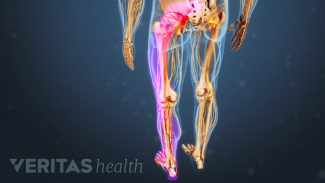
What is Sciatica and How It’s Treated
Many people will experience low back pain at some point in their lifetime. Sometimes low back pain can extend down the back of the hip and leg in what is known as sciatica. Sciatica is a symptom, not a diagnosis. There are many causes of the often-debilitating pain associated with sciatica. The most common symptom of sciatic nerve pain is pain that extends into the hip, buttock and down the back of your leg. Symptoms can include sharp, shooting pain, numbness/tingling and/or weakness in the leg. Typically, sciatica only affects one side of the body. Some of the more common causes are listed below.
- Bulging or herniated disc- When a disc bulges (sticks out) or herniates (inner gel-like substance is pushed outside of the outer layer of the disc) it can compress the spinal cord or nerve roots. This direct compression can irritate the sciatic nerve and cause the symptoms of sciatica. In addition to compression, chemical irritation can occur due to inner contents of the disc coming into contact with the sciatic nerve.
- Lumbar spondylosis- this term refers to degenerative arthritis of the spine. As we age our discs lose their water content in what’s known as disc desiccation. This causes the lumbar vertebrae to sit closer to each other and decrease the opening where the nerves exit the spinal column. Bone spurs can also cause narrowing of the nerve openings.
- Spinal stenosis- there are two types. Central (column that houses the spinal cord narrows over time) stenosis refers to compression of the spinal cord, often leading to symptoms on both sides of the body. Foraminal (narrowing of the openings on with either side of the spine where nerve roots exit the spinal cord) stenosis manifests as symptoms on that one of the body.
- Piriformis Syndrome- when the sciatic nerve exits the spine, it courses down the back of the hip and either through or beneath (genetic variations among the population) the piriformis muscle. When this muscle becomes tight or spasms it can compress the sciatic nerve leading to sciatica
- Prolonged direct compression- sitting for prolonged periods of time can lead to chronic compression of the sciatic nerve. Men who sit with their wallet in their back pocket can also cause compression of the sciatic nerve.
The only way to determine the cause of your sciatica is to be seen by your local Doctor of Physical Therapy for a full assessment. Your PT will assess your range of motion (hips and low back), strength, posture and biomechanics to determine why you’re experiencing symptoms. Treatment will be focused on alleviating issues found during your physical examination and will typically focus on improving range of motion of the lumbar spine and hip joints, traction to decompress the spine and alleviate compression of nerve tissue, strengthening of hip, glutes and core to stabilize your spine, nerve glides/flossing to ensure the nerves are able to move through soft tissue without restrictions during body movements, and ensuring proper posture during various activities throughout the day.
If you or someone you know is suffering from sciatica, please reach out to your local orthopedic physical therapist. Sciatica can, in most cases, be successfully treated without surgery or the needs for addictive opioids. Your PT will get you back to living the life you want and enjoying your favorite activities. Physical therapists improve the way you move!

